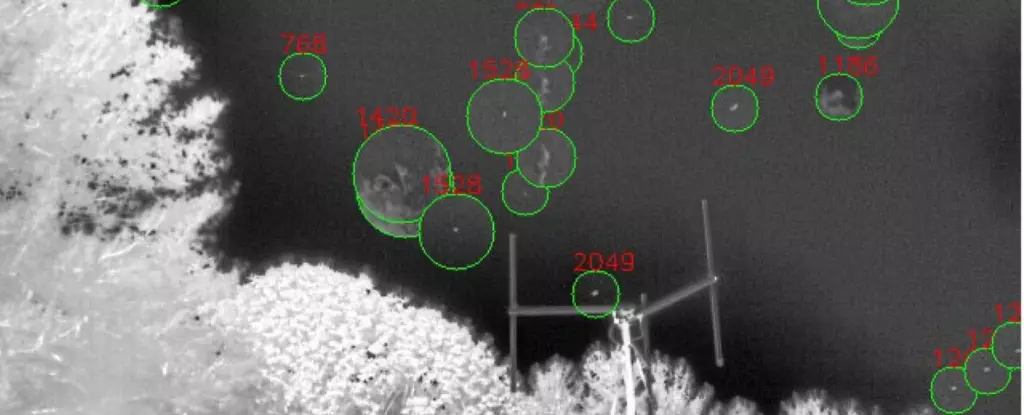In recent years, the conversation surrounding Unidentified Aerial Phenomena (UAP) has evolved from fringe discussions to mainstream scientific inquiry. This shift gained significant momentum in 2021 when the Office of the Director of National Intelligence (ODNI) released a pivotal report that unveiled previously classified information regarding UAP sightings. The heightened interest from organizations such as the Department of Defense culminated in the establishment of the All-domain Anomaly Resolution Office (AARO), tasked with the responsibility of investigating these enigmatic occurrences. However, despite the government’s efforts, a notable gap remains in publicly available scientific data, prompting the need for a more systematic and transparent approach to the study of UAPs.
The Harvard-Smithsonian Initiative
To bridge this information deficit, a groundbreaking study led by the Harvard-Smithsonian Center for Astrophysics (CfA), in collaboration with the Galileo Project, has set in motion an ambitious project aimed at detecting potential extraterrestrial craft. At the heart of this initiative is an innovative instrument called the All-Sky Infrared Camera, colloquially referred to as Dalek—an allusion to the iconic extraterrestrial villains from the *Doctor Who* series. This creative nomenclature not only hints at the instrument’s capabilities but also invokes the imagination surrounding the possibility of extraterrestrial life.
Under the leadership of Laura Domine, a prominent researcher associated with both Harvard University and the Galileo Project, this ambitious effort gathered input from experts across various institutions including the Whitin Observatory and the Scientific Coalition for UAP Studies. The novelty of this endeavor lies in its commitment to employing cutting-edge technology to capture UAPs through multispectral and multimodal observations, a marked departure from traditional methods.
Technological Innovations and Methodologies
The proposal emphasizes the integration of advanced observational techniques as highlighted in a recent recommendations report from NASA. The necessity for purpose-built sensors capable of rapidly adjusting to fleeting UAP events is paramount for accurate detection. These upcoming instruments are designed to log not only the motion and shape of UAPs but also to capture a broader spectrum of data, including color and acoustic signatures. This sophisticated approach aims to create a multidimensional understanding of UAPs, elevating the field of study beyond anecdotal reports and into empirical research.
Among the innovative features of the Dalek system is its deployment across multiple observatories. With three sites operational in locations including Harvard, Pennsylvania, and Nevada, the project anticipates substantial data collection. It is estimated that each observatory could witness the detection of approximately 100,000 objects monthly. This extensive dataset promises to be transformative, as it will be methodically analyzed using a suite of machine-learning algorithms designed for object detection and trajectory reconstruction.
Data Collection and Preliminary Findings
In its initial five months of operation, the observatory recorded encounters with half a million objects, with a striking 16% of these trajectories identified as anomalies worthy of further scrutiny. This preliminary phase has yielded about 144 ambiguous cases that remain undetermined. According to Professor Avi Loeb, the principal investigator, these results underscore the necessity of incorporating additional sensor data, including distance measurements, to refine classifications further. Such advancements would enable researchers to discern between ordinary objects and potential extraterrestrial witnesses.
The stark comparison between findings from governmental studies, which identified only approximately 3% of cases as ambiguous, versus the elevated 16% from the Dalek initiative, provides a revealing insight into the potential for academic research in this domain. The disparity highlights the innovative methodologies employed by the Galileo Project, allowing for a broader range of phenomena to be classified and analyzed.
The Quest for Technosignatures
The ultimate aspiration driving the Galileo Project is the search for “technosignatures”—evidence of advanced civilizations capable of producing technology beyond our current human capabilities. With ambitious objectives set forth by Professor Loeb and his team, the belief persists that even the slightest hint of anomalous characteristics in UAP trajectories could revolutionize our understanding of life beyond Earth. The prospect of discovering extraterrestrial intelligence holds immense implications not only for science but for humanity as a whole.
As this urgent inquiry into the skies continues, it beckons an exploration into the very questions that lie at the heart of human existence: Are we alone in the universe? The commitment to systematically collect and analyze UAP data marks a significant leap towards answering this age-old question, pushing the boundaries of scientific inquiry into realms that were once relegated to speculation and science fiction. Through rigorous research and a transparent methodological framework, the project embodies a transformative chapter in the pursuit of knowledge.

